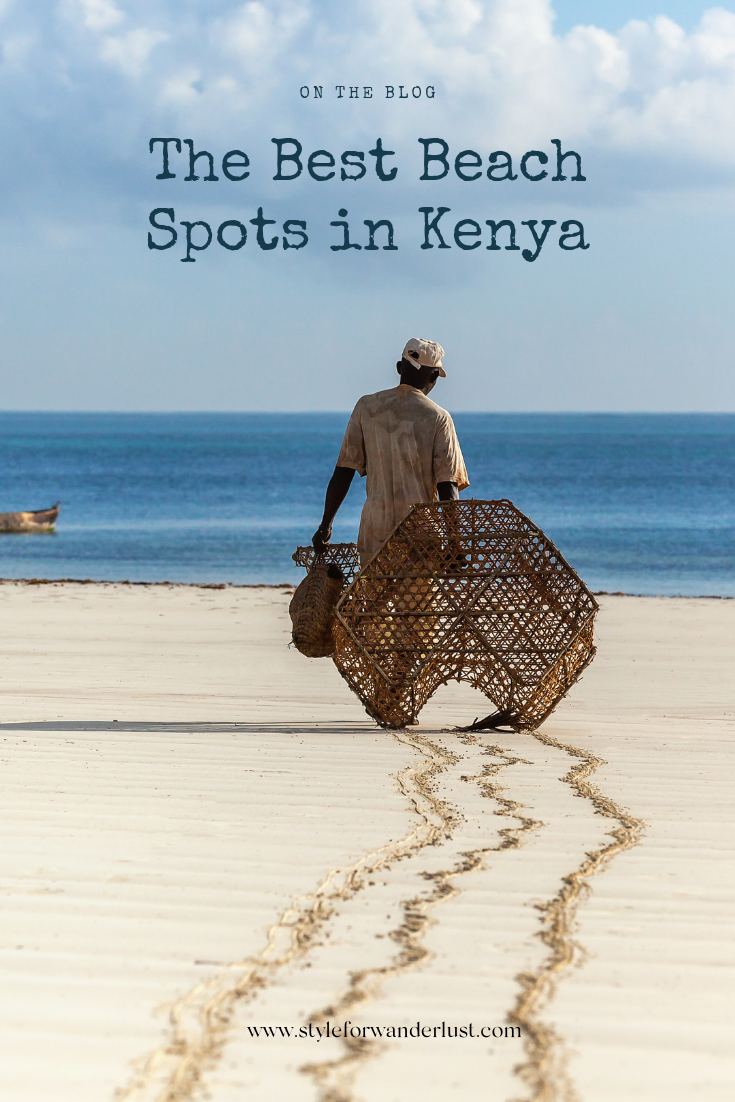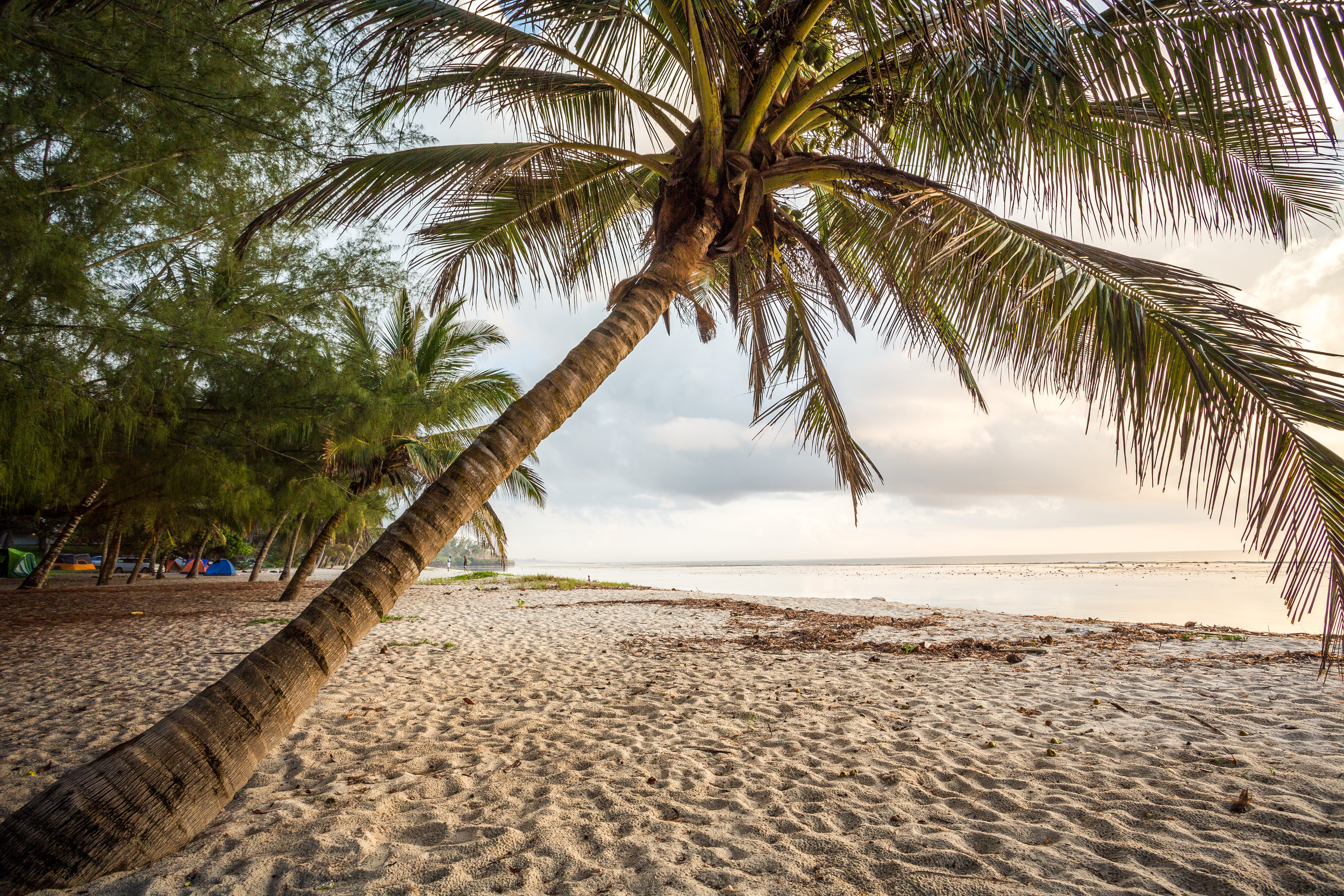The Best beach spots in Kenya
One of my most vivid memories of my Kenyan days are the lazy afternoons spent at the coast. The gentle breeze swaying the mosquito nets of a Swahili bed on which I was lying, a kikoi wrapped around my waist, sandy bare feet, the skin still warm from the sun, the horizon open in front of my eyes.
In those moments time seems to stop. Your thoughts wander freely in that subconscious way whereby they come and go gently, without you being even completely aware of them, leaving you in a cloudy state of mind where no worry or care in the world can reach you. You have nowhere to go, nothing to do. You have no desire, no struggle, no fear, no concern. There is no past and no future. You are just there, in the moment, soaking it all in. You are ageless, your identity merged with the wider whole and you are truly at peace.
If I have ever experienced a state of meditation, that certainly is the nearest I have gotten.
Kenya is often known for its wildlife, yet, with 536 km of coastline at the Indian Ocean, white sandy beaches, and a coral reef that runs the entire length of the coast, from just north of the city of Lamu to the southern border with Tanzania, making it one of the largest coastal reefs along the shores of the continent of Africa, Kenya has much to offer in addition and as a complement to the “safari experience” it is well renowned for.
The beach experience can, as a matter of fact ,be the perfect way to end a vacation in East Africa, after driving the dusty and bumpy roads of the national parks, chasing the Big Five and exploring the remote wilderness. What better way to recharge your batteries than unwinding on the shores of the Indian Ocean?
Kenya is crossed by the Equator and it shares approximately the same latitude of the Seychelles, the Maldives and Bali and as these world famous beach holiday destinations it’s also welcoming you with lines of coconut trees, warm waters that have all the shades of blue and green and a colourful and plentiful sea life, thriving thanks to the protection of the coral reef and the many Marine Parks. The entire coast is a recurrence of untouched stony bays, hidden white sandy beaches and little resort towns and small fishing villages of a distinguished Swahili flavour.
THE TIDES
On the Kenyan coast, the ocean scenery seems on a larger scale than anywhere else, because the entire Kenyan coast is subject to strong tides that twice a day give a complete facelift to the beaches. At low tide, the water goes back sometimes even of several hundred meters, uncovering a stretch of coral and sand between the reef and shore and creating a multitude of rock pools. High tide brings the water back and covers half or more of the space the beach occupied during low tide.
IS KENYA RIGHT FOR ME?
Kenya coastal area has something to offer to everyone. A water sports heaven, Kenya has enough wind to be perfect for sports like windsurfing and kitesurfing or skydiving and rich waters to satisfy snorkelers and the most seasoned divers alike and lovers of deep-sea fishing or sailing boats fans.
Whether you are looking for a secluded boutique hotel tucked away where to disconnect from the world and rest or a lively area with buzzing night life; whether you dream of staying in a villa with no windows, fanned by breezes off the ocean or in a modern air-conditioned resort, Kenya won’t disappoint you. You just need to know where to go.
So when it comes to a beach holiday how should you decide where to go?
Where to go – North or South Coast?
The Kenyan coast is divided in North and South Coast, basically meaning north or south of Mombasa, because Mombasa is an island that is connected to the north, to the mainland by a causeway but has no bridge over the bay to the south and crossing is only possible via the notoriously slow Likoni Ferry, one of the main reasons why the southern part of the Kenyan coast is less developed and offers nicer talcum powder beaches, crystal clear ocean and more untouched nature compared to the busier North Coast, particularly near Mombasa in areas like Bamburi and Mtwapa, while going further north to Kilifi, Watamu and Malindi the area is again relatively undeveloped and pristine.
The South Coast
Diani town is located about 30 km south of Mombasa and has the most popular beach in the south coast, that stretches for 10 km from the Kongo river to the north to Galu beach to the south. This is a tranquil area, that is famous for its long white beach and for its high class restaurants and beach villas and hotels. The area is also surrounded by tropical forest and inhabited by the famous black and white colobus monkey(s) that you see swinging through the trees, curious and shy at the same time and that you will certainly hear stamping on the roofs from dawn till dusk.
Diani is the perfect place if you want to relax undisturbed in a hammock, sip a coconut drink under the shade of palm trees and just watch the white sand gleaming in the sun and the clear sea shimmer in a deep blue colour.
Diani also offer a very lively nightlife with exceptional dining. From here you can also enjoy interesting day excursions to Shimba Hills National Reserve, the only Kenyan reserve in a rain forest where you can admire elephants and hordes of bush babies and to the Mwaluganje Elephant Century, both approximately an hour car.
Always on the South Coast, just 10 km south of Diani you can find the only private Island resort of the country, the Sands at Chale Island, only 600 meters off the mainland and reachable by tractor during the low tide but still retaining the feel of a secluded hideaway, millions of miles away from civilisation. The resorts occupies 15 acres of the tiny island, only 1.2 km long and 0.8 km wide and its laid out around the coral secluded bay that is protected by the coral reef, with a main white sandy beach that is certainly among the best in the country and several small strands where you are likely to be the only one with the exception of maybe the company of a few sea turtles, since the island is a nesting place for many endangered species due to its remoteness and the lack of seaweeds pile-ups. The remaining part of the island is covered by the indigenous sacred forest known as “kaya” teeming with wildlife.
The Kaya Kinondo Sacred Forest can be visited only with a guide and one has to tie a black kanga as a sign of respect to the spirits residing in the holy forest where you can make a wish hugging a sacred tree. The tour takes about two hours and will take you to a clear area where the residence of the ancestors is, while you are taught about the flora and fauna of the area.
The island also has a mystical tidal salt lake surrounded by mangrove forest, which boasts the tallest mangrove trees in East Africa. Taking a boat trip among the winding waterways in the mangrove forest is certainly an incredible experience bringing you in a magical tropical jungle like the ones of Kipling’s books.
Accommodation
https://www.elewanacollection.com/afrochic-diani-beach/at-a-glance
Nomad’s - https://thesandsatnomad.com/en/
Diani Marine Villas - http://www.dianimarinevillas.com
The Maji Resort - https://www.the-maji.com
Dining
Ali Barbour’s Cave Restaurant - https://www.alibarbours.co
The North Coast
Malindi
Malindi is a small town known for its casuarina-fringed beaches and world class resorts and some of the best restaurants of the entire coast. The Malindi Marine Reserve was Kenya's first, it was opened in 1967 and has been designated World Biosphere Reserve since 1979. Malindi has a large Italian community and an Italian sea resort feel in the squares teaming with cafés and restaurants and the many shops and boutiques. Incredibly good Italian food is available in many of the restaurants and lovely beach fashion and accessories can be found in the shops.
Accommodation
Billionaire Resort - http://www.billionaireresort.com
Ocean Beach Hotel & Spa - https://www.oceanbeachkenya.com/
Diamond Resorts - https://dreamofafrica.diamondsresorts.com
Leopard Point - http://www.lpbresort.com
Kilini Baharını - http://www.kililibaharini.com/en/
Dining
The Old Man & The Sea - https://www.facebook.com/oldmanmalindi/
Billionaire Resort - http://www.billionaireresort.com
Watamu
One of Kenya's most popular coastal getaways, particularly with the locals, Watamu is located 10 miles south of Malindi and it’s well known for its series of beaches set around cerulean coves and sheltered by the reef and its outstanding water sports facilities. Thanks to that and the Watamu Marine Park, famous for its visiting whale sharks, resident manta rays and three different species of sea turtles, it is considered one of the best snorkelling and diving areas of the entire African coast.
Watamu means “the land of sweet people” in Swahili and this area still maintains a friendly and laid back atmosphere. From Watamu and Malindi you can also enjoy a day excursion to the Swahili town of Gedi, whose stone medieval ruins have been granted the World Heritage status by UNESCO. What makes the trip there even more mysterious and fascinating is the fact that the lost town of Gedi is in the thick of the Arabuko Sokoke Forest Preserve, a real jungle inhabited by rare birds and mammals like the namesake Sokoke wildcat and the ever presents herds of elephants.
Accommodation
Hemingways Watamu - https://www.hemingways-collection.com/watamu/
Medina Palms - http://medinapalms.com
Turtle Beach Resort - http://www.turtlebaykenya.com
Watamu Tree House - https://www.treehouse.co.ke
Lonno Lodge - https://www.lonnolodge.com
Alawi Boutique Hotel - http://www.alawiboutiquehotel.com
Going farther North
The beaches in the north of Kenya are often remote and wild, characterised more and more by rocky bays with clear waters. Some areas have wild beaches without human presence such as Kipungani Beach and Turtle Bay Beach. Here the sea becomes quickly deep and it’s not that much influenced by the tides, providing perfect swimming conditions.
Lamu Island
The Medieval stone town of Lamu, a 14thcentury Swahili settlement, is a living museum of the hybrid African-Islamic-Arabian culture that dominated the East African coast for hundreds of years. The island has developed its own particular culture, an assimilation of many influences, and has developed its own identity that still lives on.
There are no vehicles on the island and the main means of transport are today, as they always were, donkeys and dhows and this contributes to the timeless atmosphere you breathe here, where time as stopped and life follows the same rhythms it always has, unchanged like the narrow streets and the market square of the old Swahili town centre.
The area is famous for attracting a varied and eccentric crowd and for its luxury resorts and villas hidden amongst the islands of Manda, Pate and Kiwayu.
Places like Kizingo resort that bluntly states on the website to have no:
“television, dvd, computer games, jet skis, jet lag, telephones, a conference centre, newspapers, a swimming pool, hassle, hurly-burly, hairdryers, quad bikes, loud or piped music, people who sell things on the beach, minibars, air conditioning, a single pretension, inflated prices, much of a profit motive, anything artificial…” but have “wild, untouched beaches; sand that’s talcum powder fine; dry, equatorial heat made luxurious by whispering wind; sunsets so breath-taking they stretch credulity; a blessed near-total absence of mosquitoes; calmness but not stillness, because everything sways and dances to nature; wonderful local staff; a happy, hospitable atmosphere; the eclectic and often eccentric company of people you won’t meet at home; the divine freedom to do little or nothing, or to swim with dolphins, to witness a turtle laying her eggs, to explore, to water-ski, to kite surf…”
clearly set the tone of what this island is all about.
If you prefer something more traditional, Peponi Hotel is an historic landmark in the area and Petley's Inn is the oldest hotel in East Africa, around 170 years old.
Accommodation
Kizingo – https://kizingo.com
Peponi Hotel - https://www.peponihotel.com
Petley’s Inn - http://romantichotelskenya.com/petleys-inn/
Che Shale in Mabrui (North of Malindi) – Kite surfers heaven http://www.cheshale.com
WHEN TO GO
The climate at the coast is tropical, warm and wet but with a lovely sea breeze. The “seasons” are sort of opposite of those of the northern hemisphere with our winters being the hottest period, the hottest months are February and March and our summers being the coldest. Temperatures range between 25 to 32 degrees Celsius throughout the year. The worst time to travel is in the main rainy season, from April to June. It usually rains only briefly and then the sun comes out again, but sometimes it can rain the entire day. The second rainy season, taking place between October to November, presents less important rains. During both, the weather is never cold and you can still enjoy the beach. Actually, for people suffering from extreme heat, the rainy seasons can even be a better time to visit, taking advantage of the low season prices and low touristic presence.
The night before my daughter was born I had the incredible experience of walking my dogs on the beach while the sea water was turning into a glowing blue wave, lit by a rare natural phenomenon called bioluminescence, which occurs when micro-organisms in the water are disturbed by oxygen and produce a chemical reaction that turns the water into a shimmering mirror.
I have been fantasising a lot about this, reading it as an astral conjunction that preceded the birth of my firstborn, a turning point in my life and the beginning of a lifelong connection between the new life that came into this world at the Mombasa Hospital the day after and the Indian Ocean.
Read more about attractions:
http://www.magicalkenya.com/tourism-directory/attractions?category=3&type=31













